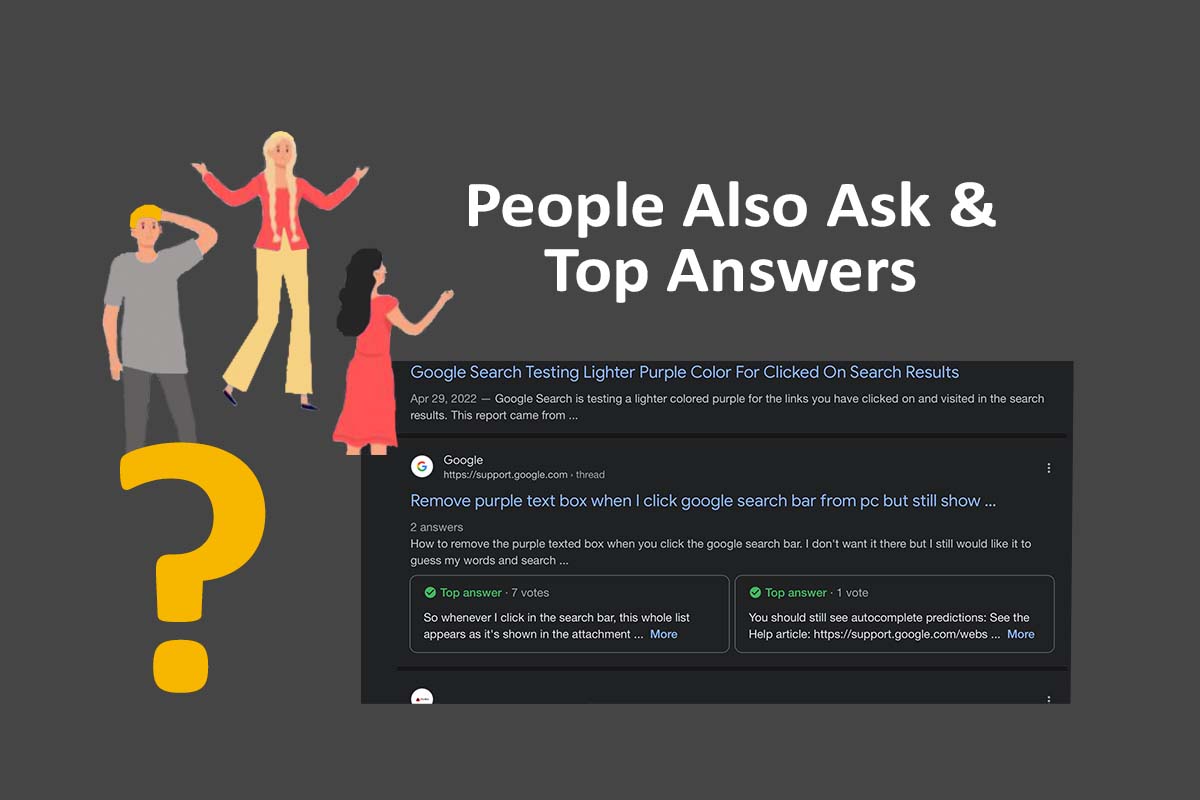How to Avoid Schema Markup Drift
Google structure data updates occur quite often. Staying current may mean keeping your products findable, or worse, avoiding a manual penalty.
Creating high-quality content is valuable to both your site visitors and Google. Structured data make it easy for search engines to learn what useful data you publish and your intent. Consider the crucial details on your product pages such as pricing, product availability, product variants, how-to details, contact information, etc.; all this needs valid schema markup to shape your knowledge base.
What is Schema Markup Drift?
Schema Drift can be a complex issue to manage. It basically encompasses strategies and tasks that handle when web page content and schema markup diverge. Typically this occurs when plugin engineers or static, hard-coded, schema.org markup falls behind either code or content updates. If we consider the meaning of the word “Drift” as a noun, it’s very apropos. Oxford Languages says it is “a continuous slow movement from one place to another.”
As with anything gradual, it often is easy to miss without an intentional focus.
Progress on the world web is continual. These forces press SEOs to be agile in their approach to managing semantics and schema.
Ways that markup continually evolves:
Examples of Schema Markup to Watch for Drift
Dataset schema markup has several new possibilities pending
Dataset schema markup was last updated on October 25, 2022. And many awesome ideas are being considered. For example, a knowledge graph of the AI innovation ecosystem, and ML Models are one kind of entities in process. As new possibilities emerge, more questions are surfacing. For example, “Can OML describe ML over semantic datasets?” While OpenML metadata uses some OML ontology, currently, neither ml-schema nor Expose do. (Expose is a tunnel application using PHP that allows you to share your local sites and applications with others on the internet.)
We already have dataset schema markup. If MLModel is widely adopted as a subclass of Dataset, then might a superclass Model require a markup update? There are so many scenarios like this. Several schema markup updates are close to being rolled out and others are discussion points that may shape future implementation.
Item Condition credentials changed for valid product offer
As of October 2022, both Microdata and JSON-LD valid markup for itemCondition changed. The content value of “new” no longer validates. To use this schema type, now NewCondition if needed within Offer. This is typically nested under Product schema. For eCommerce sites, it is especially important to fixing all product markup errors will help keep your revenue flow up.
Clarified review schema markup
Another thing to know, Google has recently made it clearer that embedding local reviews within your web pages doesn’t impact web rankings. Meaning, there may be other more essentail structured data implementations to spend your time on. John Mueller clearly stated, “make sure not to use structured data markup on reviews not collected on your site.” This is something that I’ve asked about in the past and had fuzzy answers. While we’ve been cautious, it’s always best to have real clarity. For some pages that we’ve not updated in years; the review content needs updating to avoid schema markup drift.
Structured data is often manually added to your website code – if you employ someone with proven know-how. Several SEO plugins can assist with minimal effort. In either case, keeping an observant watch on schema requirements can save a lot of headaches.
Know What’s Occurring if a Plugin Manages your Schema
Roger Montti, a favorite author of mine, recently wrote about how the All In One SEO WordPress Plugin Vulnerability Affects Up To 3+ Million. This plugin comes with built-in support for Schema markup, as many do.
It highlights the need to be cautious about using plugins to manage your schema markup. Many times, the “drift is significant. Having tested multiple similar plugins, I’m surprised that often the errors on their own sites using their own tools are significant. I do sympathize with the work it must take to keep an app or plugin current. I also sympathize with the three million+ active users who discovered they are vulnerable to two Cross-site scripting (XSS) attacks.
This is no trifling matter. Montti reports that “The vulnerabilities affect all versions of AIOSEO up to and including version 4.2.9.” How does this happen? Cross-site scripting (XSS) attacks are a form of injection exploit that involves malicious scripts executing in a user’s browser which then can lead to access to cookies, user sessions, and even a site takeover.
Well-maintained plugins and apps may automatically ingest current schema vocabulary versions. You will want to explore all schema opportunities that support all possible entity types. However, it takes experience to know which entity type is best for the purpose of individual pages. You want both effective and streamlined schema markup to avoid code bloat and have the best representation of your page.
Why Make Search Engines Have to Guess?
It can be a big guessing game for Google to determine the key points in your content, who’s the author, the company/organization it represents, and which data is most useful for matching search queries. Content updates are a good thing. You just shouldn’t forget that your schema needs to be updated at the same time.
Schema Markup Drift Comment by Martin Splitt
“You will have drift between your schema markup and what’s on the page with updates over time. Whoever has control over putting the content on the page has the semantic responsibility. Whether dev or SEO. Try to map whatever is on a page to broader concepts.” – Martin Splitt, Head of Google Developer Relations[1]
It is helpful to properly structure and nest your Schema so that search engines can quickly recognize the various properties of a given entity and the relational nodes between them and other entities. We prefer JSON-LD, which annotates elements on a page, structuring the page’s data, which can then be helpful to search engines.
A key advantage of implementing structure data markup is disambiguating page elements and establishing qualities and facts surrounding entities, which is then associated with creating a more organized, better web overall. However, the advantages of structure data markup can be quickly lost if past code becomes redundant.
Typically your core name, address, and phone number will change less often. For these foundational business details, maintain accurate Organization structuted data or Local Business schema is vital.
Why is Avoiding Schema Markup Drift Important?
Schema increases your chances of winning rich results: Google search engine result pages (SERPs) are continually adding new ways to nap highly visual placements. For, example, the popular “People Also Ask” boxes and “People Also Search For” featured snippets can include links directly to your website.
Improves your website quality and E-E-A-T: On its own, structured data is not a direct ranking factor. However, Google consistently recommends its usage because it helps its search engine know what’s on your site. This way of educating Google better about your content and the entities included on your site through structured data also simplify and improve their assessment tasks of your website’s quality and E-E-A-T.
Structured Data Feeds Your Google Knowledge Graph
Whether you manually manage your schema or automate structured data, it has many uses.
Google’s Knowledge Graph sphere is rapidly commanding more SERP space. While Google gathers information in many ways that we don’t understand, we know that schema code feeds its bots’ information.
In 2018 Google began talking about its Topic Layer. This aids its machine learning to better assess web content and how topics and subtopics work together. Google stated the following:
“So we’ve taken our existing Knowledge Graph—which understands connections between people, places, things and facts about them—and added a new layer, called the Topic Layer, engineered to deeply understand a topic space and how interests can develop over time as familiarity and expertise grow. The Topic Layer is built by analyzing all the content that exists on the web for a given topic and develops hundreds and thousands of subtopics. For these subtopics, we can identify the most relevant articles and videos—the ones that have shown themselves to be evergreen and continually useful, as well as fresh content on the topic. We then look at patterns to understand how these subtopics relate to each other, so we can more intelligently surface the type of content you might want to explore next.” – Helping you along your Search journeys
Both Google’s structured data adoption and the ever-evolving Schema.org library are fantastic advantages that can guide how your content can be better structured. It can help your site resolve content ambiguity and disorganized data.
Basically, schema drift confuses your content for search engines. It is a data quality issue. Think of it as your data layer that informs Google’s topic layer. Managing Data Quality becomes a bigger task along with more publications and pages over time. Schema is meant to serve a specific purpose. Structured content via data quality is super helpful; but when it drifts from accuracy, it is a data problem.
Your schema needs credibility.
Two main sources to follow to keep informed up schema markup changes:
SUMMARY: You don’t Want to be Derailed by Schema Markup Drift
If you’d like help keeping your schema accurate, call 651-205-2410. We’d love to help! Audits Protect from Structured Data Markup Drift
SUMMARY: You don’t Want to be Derailed by Schema Markup Drift
If you’d like help keeping your schema accurate, call 651-205-2410. We’d love to help! Audits Protect from Structured Data Markup Drift
References:
[1] https://webinars.searchenginejournal.com/search-engine-journal/Q-A-With-Google-s-Martin-Splitt-Semantic-HTML-Search-Google-Search-Console
This content was originally published here.


